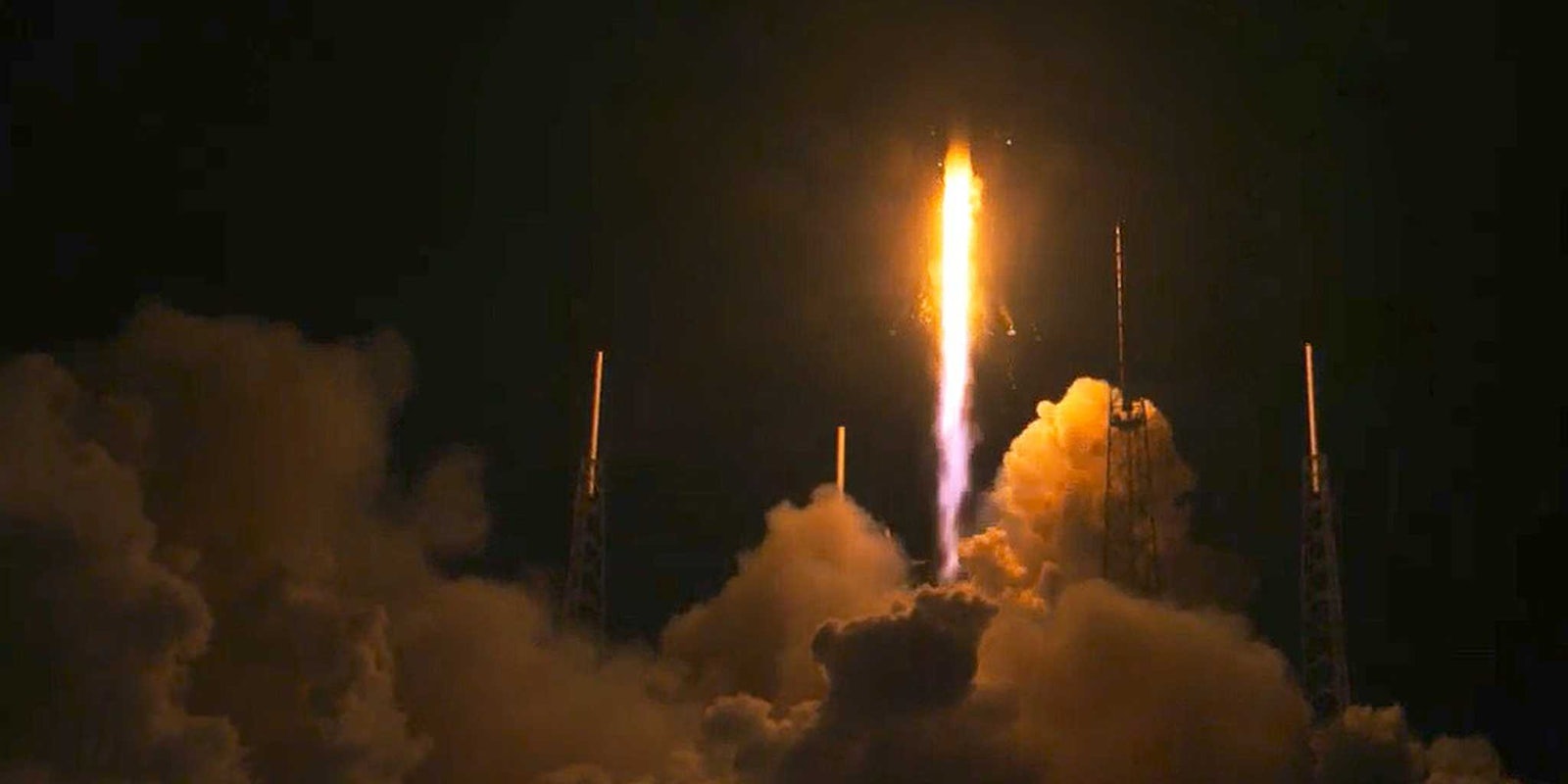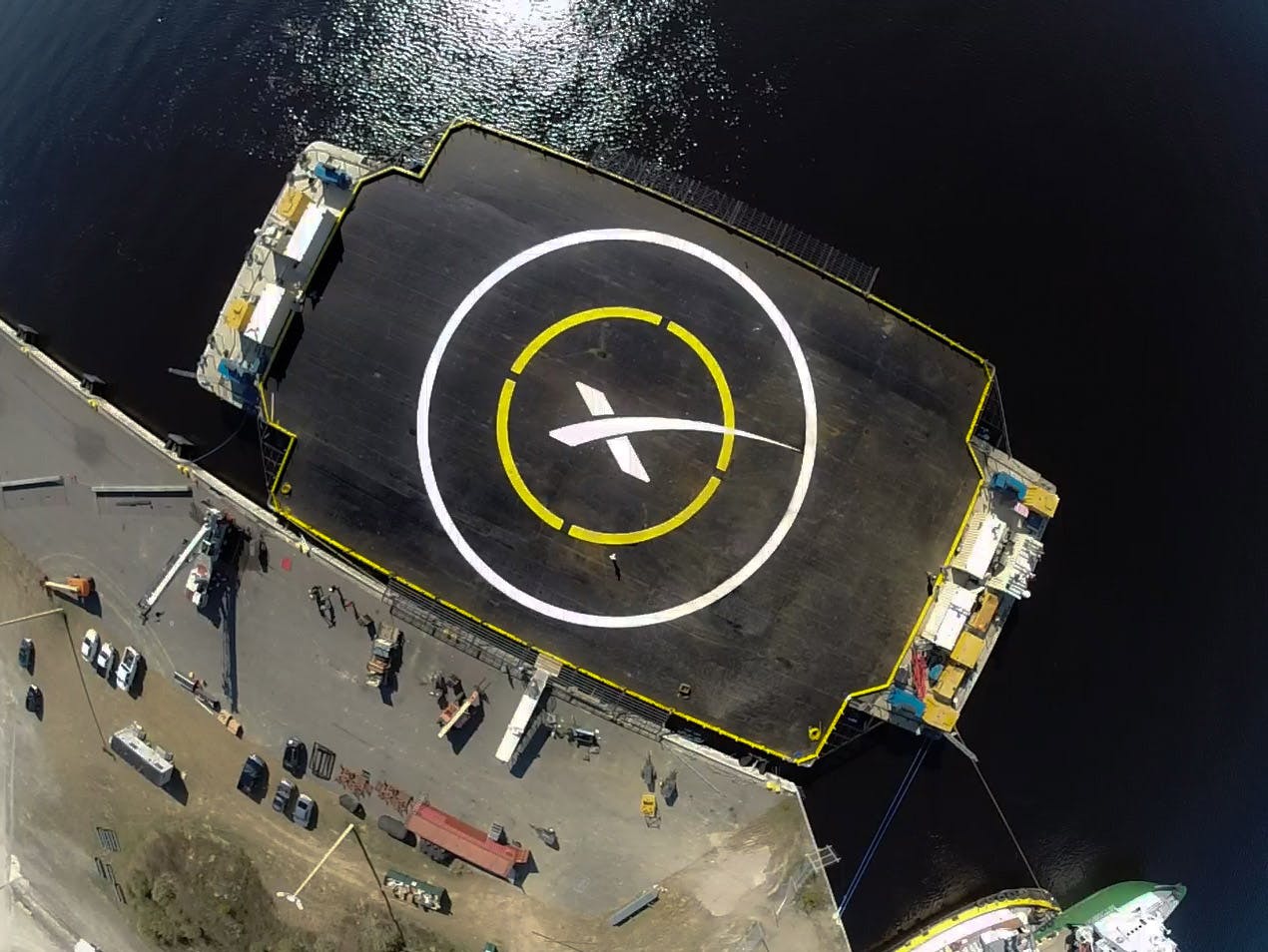During Space X’s launch of its Falcon 9 craft, onlookers may pay more attention to the ground than they do to the sky. The company will be attempting a precision landing of its rockets on a floating ocean barge.
The task is the latest test in Space X’s plan to make its rockets reusable—an important step toward making space travel more affordable. In a press release from Space X, they describe the reusable rocket as “the pivotal breakthrough needed to substantially reduce the cost of space access.”
The company has landed in water and on the ground in previous tests, but the platform for its next launch will present a significantly larger challenge. Space X calls its custom-built ocean platform the “autonomous spaceport drone ship.” It looks an awful lot like what you and I would probably call a sea barge.
Measuring 300 feet by 100 feet and equipped with wings that can expand its width to 170 feet, the floating platform will have to catch the 70-foot wide stage one rockets of the Falcon 9, which would be enough of a challenge if they weren’t also falling from space. Space X describes the task of stabilizing the 14 stories tall rocket falling at a speed of nearly one mile per second as “trying to balance a rubber broomstick on your hand in the middle of a wind storm.”
To help with stabilization, the engines are relit for a series of three burns. The first, called the boostback burn, adjusts where the rocket will impact on the ground. The second—the supersonic retro propulsion burn—slows down the speed of the rocket from 1,300 meters per second to 250 meters per second (and has a very cool name). The final burn occurs before landing, slowing the drop to about 2 meters-per-second and deploying the landing legs.
Even with all of these steps to make the landing as safe and as feasible as possible, Space X admits that the odds of success aren’t great. They placed them at 50 percent at best.
“During previous attempts, we could only expect a landing accuracy of within 10 kilometers,” Space X explained. “For this attempt, we’re targeting a landing accuracy of within 10 meters.”
Photo via jurvetson/Flickr (CC BY 2.0)



